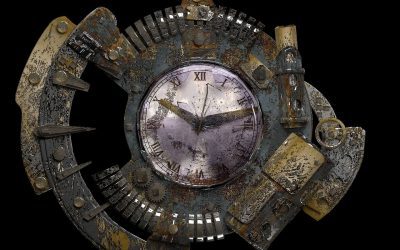Engine Design has always been of utmost significance when it comes to improving overall efficiency of aircrafts.
In the pursuit enhancing efficiency of turbofan engines, although several steps may be undertaken, we will attempt to examine only the latest and the upcoming techniques the industry is working on to improve turbofan efficiency.
Geared Turbofans

Very early on, research had suggested and confirmed that high bypass ratios would result in increased overall efficiency of Turbofan Engines, and since then, attempts have been made to increase the bypass ratios by using various means.
One of the ways to increase the bypass ratio of the existing Turbofans is to increase the fan diameter, but because the fan is already spinning at very high speeds, increasing the diameter of the fan any further would mean that the fan tips would travel at even higher velocities, and this could lead to catastrophic vibrations.
Thus, if the diameter of the fan has to be increased, the fan must rotate at slower angular velocity.
However, in a conventional turbofan, since the fan is connected to the low pressure compressor and the low pressure turbine by a single shaft, the fan rotates at the same angular velocity as this turbine.
Therefore, in order to allow the fan to rotate at an angular velocity smaller in magnitude than that of the turbine, a planetary gear mechanism must be used between these components.
This mechanism would allow the fan to revolve at a lower angular velocity, while the turbine continues to rotate at its optimum speed.
Because the fans are more efficient the slower they spin, while turbines are more efficient the faster they rotate, this solution results in an improved overall efficiency.
Additionally, to catch up to the level of the propulsive efficiency offered by a Geared Turbofan, a conventional turbofan would have to incorporate several additional stages of compressors and turbines, and this would drive up the part count, costs and maintenance.
Thus, a Geared Turbofan allows the bypass ratio of the contemporary Turbofan engines to increase, and therefore results in enhanced overall efficiency.
Geared Turbofans have just recently entered into service with commercial airliners.
PurePower, for example, is a geared turbofan engine that has been developed by Pratt & Whitney, who claim that, by adding the gearbox mechanism, they have been able to develop an engine that has a bypass ratio of 12:1 compared to the bypass ratios of around 8:1 for conventional turbofans.
For the same aircraft (A320 neo) powered by PurePower, this has resulted in a 15% reduction in fuel consumption compared to when the same aircraft is powered by a conventional turbofan, according to The Economist.
Ceramic Composites for Turbofan Materials
Ceramic Matrix Composites (CMCs) represent a breakthrough in materials technology and have been identified as one of the key materials for improving the thrust-to-weight ratio of aircraft engines, according to NASA.
Several latest research studies suggest that CMCs can be used to manufacture many components of turbofans, including turbine blades, combustor liners, and nozzle flaps etc.
This is because, according to research, CMCs can withstand high temperatures and possess a higher fracture toughness compared to monolithic ceramics. As a matter of fact, Grose states that parts made purely from ceramics have the ability to withstand up to 1500°C.
From the principles of thermodynamics, a high temperature durable material is desirable for the combustion chamber, because, the higher the temperature at which combustion takes place, the more efficient the process will be.
This results in an improved thermodynamic efficiency of the turbofan engine.
Additionally, very high temperatures can also cause the turbine blades to melt, but if the turbine blades are made of CMCs, then they should be able to withstand higher temperatures than turbine blades made of materials with a lower temperature durability.
In addition to having high temperature durability and high fracture toughness, CMCs are also very light weight, which could again add to the fuel efficiency.
As a matter of fact, experts estimate that the use of such ceramic parts in aricraft engines can reduce the weight of the engine by 10% to 30%, which would be a major breakthrough.
This article has been adapted from the original works of Awn Hussain
Contact us to get featured in a sponsored post on IBNESTO.




0 Comments